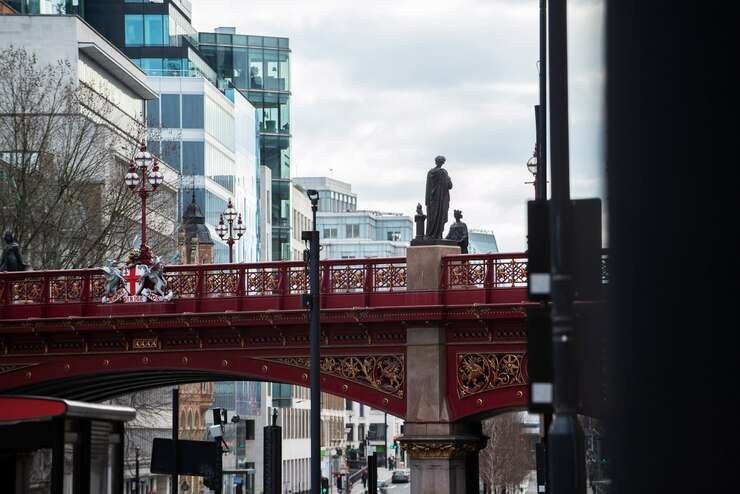Bangar Granshough is a unique area in Belfast with a rich history that dates back several centuries. It is situated within the urban center of Belfast but maintains an element of the countryside. This balance between city and countryside makes it an intriguing area for study and exploration.
Origins and Etymology of Bangar Granshough
The name “Granshough” is derived from Gaelic, meaning “the field of the sun.” It signifies the area’s historical connection to agriculture. This Gaelic origin points to its early settlers’ cultural and linguistic roots, reflecting the broader historical context of Belfast.
Bangar Granshough’s Role in Early Belfast Development
Bangar Granshough was a critical part of Belfast’s growth during the early centuries of settlement in the region. As an agricultural hub, it provided food supplies to the expanding population of Belfast. The fertile land made it suitable for cultivating crops that were essential for local sustenance.
Commercial and Agricultural Balance in the 18th Century
In the 18th century, Bangar Granshough thrived both as a commercial and agricultural zone, vital for Belfast’s economy. It was a strategic location where settlers could practice farming while also engaging in trade activities. The dual role of Bangar Granshough contributed significantly to Belfast’s prosperity during this period.
Settlers and Agricultural Practices
The settlers of Bangar Granshough utilized the fertile soil to cultivate a variety of crops to meet Belfast’s growing needs. They introduced techniques that allowed for the cultivation of vegetables, grains, and other essential produce. These agricultural activities supported the population and created an interdependence between the city and the countryside.
Geographical Advantages of Bangar Granshough
Bangar Granshough was situated in a location that facilitated both farming and trade activities with relative ease. Its proximity to the River Lagan provided settlers with access to water resources essential for farming. It also allowed for the easy transportation of goods by small ships along the river.
Trade and Commerce at Bangar Granshough
Bangar Granshough was not limited to agriculture but also played a crucial role in local trade activities in Belfast. The area served as a loading point for small ships, which carried various products to other parts of Northern Ireland. This commercial activity was a fundamental part of the economic development of Belfast in the 18th century.
See Also: Michelle Vales NYS Notary Public: A Closer Look
Impact on Belfast’s Food Supply Chain
The agricultural produce from Bangar Granshough formed an integral part of Belfast’s food supply chain during the city’s formative years. Its fertile fields contributed to meeting the growing demand for fresh produce in the expanding urban center. This ensured that Belfast’s residents had access to locally grown food, supporting overall well-being and economic stability.
Bangar Granshough’s Influence on Local Culture
The agricultural traditions of Bangar Granshough have influenced the local culture, shaping how the community relates to its surroundings. The area’s rural characteristics allowed for traditional farming practices to continue even as urbanization spread. This cultural continuity is evident in the lasting presence of agricultural elements within the community.
Transition to Modern Times
As Belfast began to urbanize further in the 19th and 20th centuries, Bangar Granshough underwent significant changes. The once-thriving agricultural zone began to give way to more residential and commercial developments. However, elements of its historical background remained, offering a glimpse into the area’s past agricultural heritage.
Economic Shifts and Development in Bangar Granshough
The economic focus of Bangar Granshough gradually shifted from agriculture to a mix of commercial and residential activities. Modern infrastructure projects replaced many of the traditional farmlands that had once characterized the area. Despite this shift, the historical significance of Bangar Granshough as a contributor to Belfast’s growth remained prominent.
Bangar Granshough in Belfast’s Urban Context
Bangar Granshough, although primarily rural in its origins, is now part of the larger urban center of Belfast. This integration into the urban fabric reflects the changing dynamics of Belfast’s expansion and development. The area’s historical significance adds a layer of cultural richness to the city’s diverse landscape.
Bangar Granshough as a Case Study in Urban-Rural Integration
Bangar Granshough offers a unique case study of how urban and rural elements can coexist within a modern city. Its agricultural roots remain visible despite the surrounding urban growth. This integration serves as a reminder of the importance of preserving historical elements while accommodating urban development.
The Agricultural Legacy of Bangar Granshough Today
The legacy of agriculture in Bangar Granshough is still present in the community’s identity and cultural practices. Local events often celebrate the area’s historical connection to farming and the countryside. These celebrations help keep the area’s heritage alive while educating newer generations about its past.
Contributions of Bangar Granshough to Belfast’s History
Bangar Granshough’s contribution to Belfast’s historical development is significant, with agriculture at its core. The area’s strategic importance in trade and food supply was essential to the city’s early success. Understanding this contribution adds to the broader understanding of Belfast’s historical development.
The Present-Day Bangar Granshough
Today, Bangar Granshough has transformed into a more residential area while retaining traces of its historical significance. Modern developments coexist with older structures, preserving a sense of continuity with the past. This blend of history and modernity makes it an interesting area to explore for both locals and visitors.
Preservation Efforts in Bangar Granshough
Efforts to preserve Bangar Granshough’s historical elements have focused on maintaining the cultural heritage of the area. Local authorities have implemented measures to ensure that historical landmarks and agricultural sites are recognized. These preservation efforts are essential to maintaining the area’s identity within Belfast’s rapidly changing urban environment.
Tourism and Cultural Appreciation of Bangar Granshough
Bangar Granshough has become a point of interest for tourists looking to explore Belfast’s lesser-known historical areas. Its mix of countryside charm and historical significance attracts those interested in Belfast’s cultural evolution. Guided tours often include stops at significant landmarks that highlight the area’s past.
Challenges Facing Bangar Granshough’s Heritage Preservation
Preserving Bangar Granshough’s heritage faces challenges, especially with ongoing urban development in Belfast. The pressure to build new residential and commercial complexes threatens the integrity of historical sites. Balancing the needs of modern development with heritage preservation requires careful planning and community involvement.
Bangar Granshough’s Place in Belfast’s Future
Bangar Granshough continues to be an integral part of Belfast’s urban identity despite modern challenges. Its historical roots and agricultural past offer a unique perspective on Belfast’s evolution as a city. Ensuring its preservation will allow future generations to appreciate the city’s diverse historical narratives.
Conclusion: Bangar Granshough’s Unique Role in Belfast
Bangar Granshough remains an intriguing part of Belfast, blending urban and rural elements within the city’s broader context. Its agricultural history, commercial role, and evolving identity contribute to Belfast’s rich historical landscape. As the city continues to grow, preserving areas like Bangar Granshough is vital to maintaining Belfast’s historical and cultural richness.




